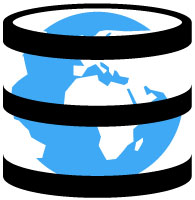BOOSTEDGE

PetaCache Description
BoostEdge PetaCache is a carrier-grade hybrid cache (Web, media & download) that can store up to a Peta-Byte, compresses and minify web pages and optimizes media (images, PDF, flash). PetaCache high performance appliance fulfils all optimization requirements of an ISP such as bandwidth saving and web acceleration.
BoostEdge PetaCache is a full featured network optimization equipment allowing ISPs to meet performances goal by shrinking traffic halving consumed bandwidth over both long-haul and access network.
It is thus no longer necessary for ISPs neither to buy more bandwidth on the long-haul not to increase the access-network capacity. It also helps MVNOs to reduce the wireless access-network fee
HOW IT WORKS
BoostEdge PetaCache serves half and more web objects from the cache preventing to download multiple times the same object. This leads to halve the consumed bandwidth over the long-haul. Thanks to its advanced content-driven and choreography-driven data retrieval engine, this hybrid and hierarchical cache achieves an effective up to 65% hit ratio.
The BoostEdge PetaCache is also cloud driven cache. By getting meta info and cache directives from an ultra huge content index located in our cloud, it make small cache devices as efficient as an oversized storage cache.
BoostEdge PetaCache is not only a cache. It embeds lossless compressions and various advanced content aware optimizations. Lossless compressions are mostly applied on HTML, and other textual data while images lossy compression and processing, PDF and flash optimization are applied to the rest of the web page components. On top of lossless compression, additional JavaScripts and CSS minification help to achieve over 80% average compression rate.
In addition the Remote Cache Control ® improves the efficiency of browsers’s local cache cutting even more traffic on the last mile.
Putting all these features together leads to efficiently reduce the bandwidth consumption by cutting up to 75% of the HTTP traffic along the access network and the mast mile. It increases the available bandwidth per user. This also makes it possible to reduces the wireless access network operation cost.
The easiest and quickest way to deploy BoostEdge is to use the fail-safe and inline IP-transparent insertion mode. Browsers’ connections are forwarded and processed depending on interception rules. Forwarded connections keeps the source IPs making boostedge invisible from the IP point of view.
Obviously other transparent proxy deployments based on routing policy are available.
BOOSTEDGE MODELS AND DECLINATIONS
The BoostEdge PetaCache ® is available:
- in single box scalar architecure
- as a VMWare virtual appliance
- as an UltraScale vector architecture
As a virtual appliance, BoostEdge PetaCache is very easy to ship and to install. BoostEdge is provided as a single OVA file which can be downloaded from our FTP server. The actual bandwidth processing capacity depends on the ESXi VMWare server and the license.
A full featured license is automatically generated at the installation without asking for a license code to boostedge. This allows to get started quickly and makes BoostEdge VMWare virtual appliance an engineers friendly demo kit.
THE PHYSICAL SINGLE BOX APPLIANCE
The most familiar BoostEdge PetaCache declination is the single box physical appliance based on a industry standard rack mounted server. This models embeds the failover network interface card which make possible to take advantage of the IP transparent inline insertion mode.
Single box appliances handle up to 2.5Gb/s of HTTP traffic on both ingress and egress. The largest model exists with a 48TB cache storage capacity
BoostEdge UltraScale is the ultimate architecture which is deployed when the traffic throughput exceeds 2.5Gb/s up to 80Gb/s. This architecture is based on role dedicated units (either rack mounted server or blades). Each unit runs a single system+firmware images exposed by a master unit. Upgrading such an architecture is as simple as connecting and registering an additional unit.
OPERATING BOOSTEDGE
Main BoostEdge’s hardware info as well as software states can be viewed and monitored via SNMP. Main BoostEdge events and alarms (H/W, system and servicesand alarms are sent as SNMP traps as well as syslog messages which can be forwared to a syslog consol.
Info, notice, warning and errors are logged via the syslog sub system and protocol. They are stored on local log files and may be forwared to a syslog consol a log storage system.
SERVICES LOGS AND STATISTCS
Each requests is stored in an extention of the de facto standard Apache access-log format. Rich statistics systems maintains all processing info such as compression ration, traffic mix, cache performances, etc. They are friendly displayed with several graphic charts while actual raw data remains accessible in tables.